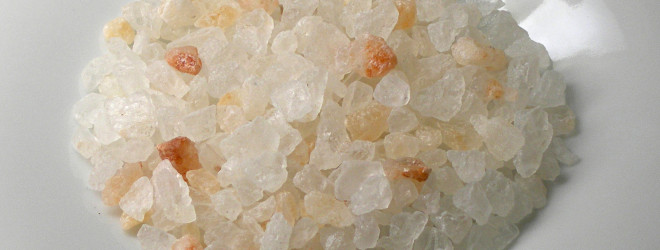Bisphenol-A (BPA) and pthalates are plasticizers commonly used in food packaging, storage and cooking materials. There is increasing evidence that they act as endocrine disruptants, suspected of playing a role in breast cancer, prostate cancer, obesity, asthma, neurobehavioural issues, infertility, uterine fibroids and endometriosis. A recent study published by Environmental Health Perspectives found that the body burden of BPA was cut by 60% and pthalates by half when participants in the study exclusively ate a fresh foods diet. Another reason to eschew packaged food and eat at home!
Archives for May 2011

Were they wrong about salt?
In a recent study, the link between salt and cardiovascular disease has been questioned.
“In a study that seems likely to re-energize the debate over dietary salt, European researchers found that the changes in the amount of sodium excreted in the urine were related to changes in systolic blood pressure. But they were not linked to diastolic pressure or the risk of developing hypertension, according to Jan Staessen, MD, PhD, of the University of Leuven in Leuven, Belgium, and colleagues. And levels of urinary sodium excretion were inversely related to the risk of dying of cardiovascular causes, Staessen and colleagues reported in the May 4 issue of the Journal of the American Medical Association. Taken together, Staessen and colleagues argued, the findings do not support “the current recommendations of a generalized and indiscriminate reduction of salt intake at the population level.”
As a practitioner of Ayurveda I have never been keen on the notion that salt is atherogenic, considering its traditional importance. To be sure, the ubiquitous use of refined salt spiked with inorganic iodine in equally unhealthy junk foods is certainly problematic, but there is no evidence that a moderate amount of unrefined salt added to homemade food is unhealthy. In Ayurveda, salt is used to balance vata dosha, and treat problems including poor digestion, diarrhea and dehydration. Several different types of salt are used in the diet, including sea salt (samudra lavana) and pink salt (saindhava). Sea salt in India is identical to most other types, and is collected from evaporated sea water, and naturally contains small amounts of iodine. Pink salt is harvested from rock quarries in the Himalayas, and contains an abundance of trace minerals, including sulfur, which gives pink salt its “stinky” taste and makes it particularly good for digestion. For general purposes I recommend adding only 1 tsp of salt to most dishes during cooking, and then if required adding a little bit more with the meal, for taste. Pink salt is also found in the Ayurvedic formula Hingwastak churna, prepared with spicy herbs including hing (Ferula assafoetida), and is taken with meals as a condiment to enhance weak digestion. Hingwastak is also very good for gas and bloating, excess mucus, and parasites.

